| 1 | Caring rattlesnakes |
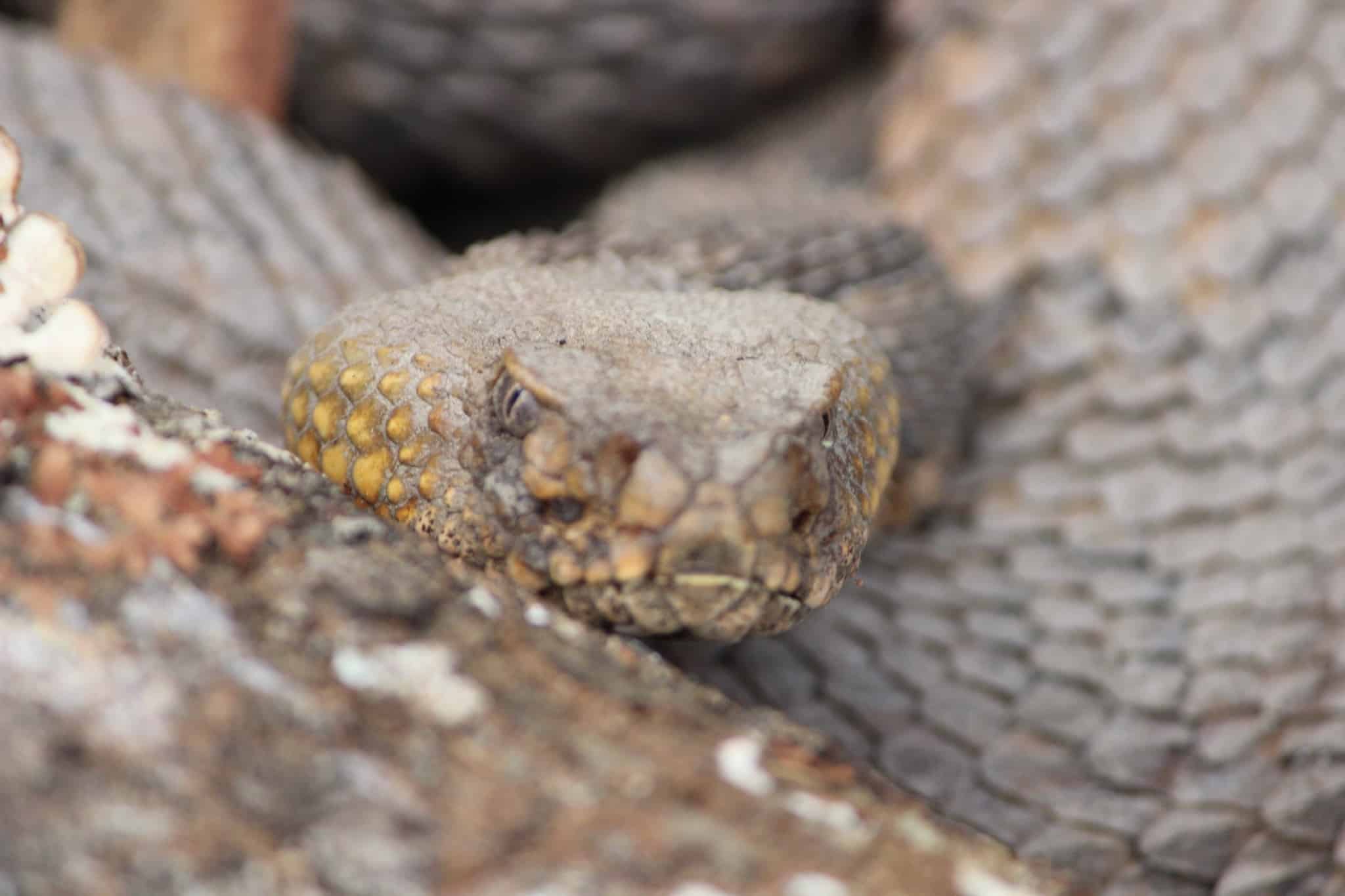
In pure appearance, rattlesnakes are one of the most terrifying snake families. Their scales are jagged, their pupils are viciously vertical, and they appear to be permanently snarling. Yet most attacks are in self defence, and when it comes to their children, rattlesnakes are perhaps the most caring group of all.
Some like red diamond rattlesnakes abandon their children instantly, in the classic serpent style. But pygmy rattlesnakes guard their young for over a week, as do sidewinders. Even males are caring, guarding pregnant females for months, while she becomes increasingly bloated and defenceless. Both males and females have been spotted near baby timber rattlesnakes, hissing and lunging when people draw too close.
With maternal care, heat-seeking IR pits, and a musical rattle, rattlesnakes are among the most advanced snake forms, from the simple dino crushers that snakes started as. When rumours of rattlesnake families living in fast food ball pits circulated the internet around 2000, they were dismissed under the reason that “snakes don’t live in families”. But rattlesnakes are a rare group that does, although that didn’t stop the rumours from being purely fictitious.
| 2 | Hundreds of garters |
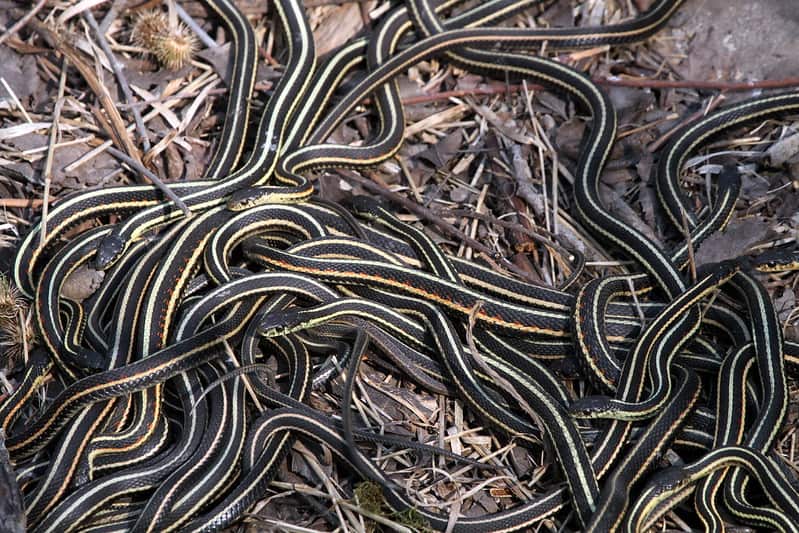
Snakes are solitary creatures overall, eating, sleeping and hunting alone. Yet a small percentage have been witnessed gathering in groups, in menacing scenes ripped from nightmares. The 30+ member garter snake family are chief among them. Common garter snakes live in cool places for a reptile, including the plains of southern Canada. Consequently, this species (Thamnophis sirtalis) has been spotted in groups of over a thousand.
These are vast writhing pits of garter snakes like something from an Indiana Jones film, but all too real, and on your doorstep rather than locked deep in an Egyptian tomb. These garter snake dens are found below bridge concrete, in cracks in walls, in large burrows, or natural hollows near streams. As well as warmth, the purpose is reproduction, as 10 males can dogpile one female in competition with each other.
The largest such gathering contained over 20,000 garter snakes, found in Manitoba. Other species that gather communally include green tree snakes (Australia), where several can flock to one tree. Multiple eastern brown snakes have been found under one stone slab, despite the hot Australian climate. Cold weather has a correlation with communal gathering, but snakes can have social personalities for more mysterious reasons.
| 3 | Mother pythons shivering |
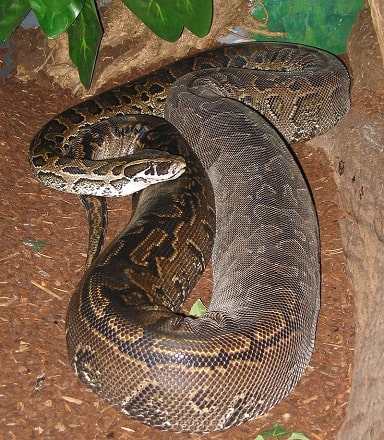
All pythons lay eggs, and some slither away instantly, keen to get onto their next adventure. Then you have the African rock python. At 5-6 metres, this is the world’s third longest snake species, and lays an average of 40 eggs. In southern Africa, mothers will lay their egg clutch in a cave, and slither a few metres away each day to bask in the sun. Her cold-blooded reptilian body gains several degrees, and then the mother returns to her eggs and coiled around them.
Using special muscular movements, the mother will purposefully transfer the sun’s warmth to the eggs, in a focussed strategy lasting several hours. The likes of ball pythons also “shiver” to warm their eggs, vibrating around them. Sometimes you’ll find snakes like the Indian cobra sitting on a pile of 20 eggs, as though proud of their work.
Newborns have secret survival strategies as well. Sidewinders give birth to 10-20 live young, normally in a cool burrow. In the searing desert heat, these newborns will form a writhing ball, position themselves at the burrow entrance, and move position within their ball to shift between hot and cool airmasses.
| 4 | Male wrestling |
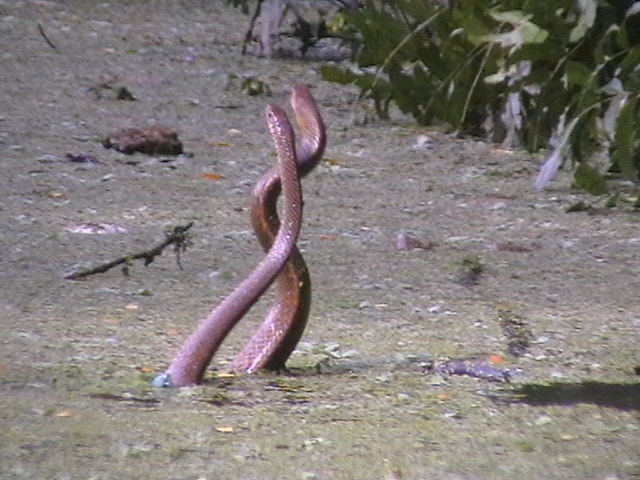
If two males of the same species meet, they sometimes ignore each other, but can also end up in a ferocious brawl. The determiner is usually whether a female is nearby. The winner takes the spoils, gaining the right to all female snakes nearby (in the same species anyway).
Male wrestling isn’t found in every snake, far from it, but pops up in most families of the serpent kingdom. The boomslang of Africa is a classic species. Two males will spot each other, slither forward aggressively, and start wrestling when still inside a tree, their balance is so great. The Australia king brown (mulga) snake is particularly brutal. Two males once wrestled for two hours, and two days later, male 2 returned, and the pair resumed their vicious brawl.
Wrestling snakes don’t necessarily bite. Many have a “no teeth” rule, preferring to tightly intertwine their bodies, and perform a game of raising one’s head above the other. Mulgas use this head-raising system, as do South American machete savanes and California kingsnakes. The latter isn’t shy about wrestling in random people’s backgardens. One move you’ll see is where a dominant male raises its head up, and smashes the rival face first into the ground. It’s usually the larger snake that wins these competitions.
| 5 | Record egg layers |
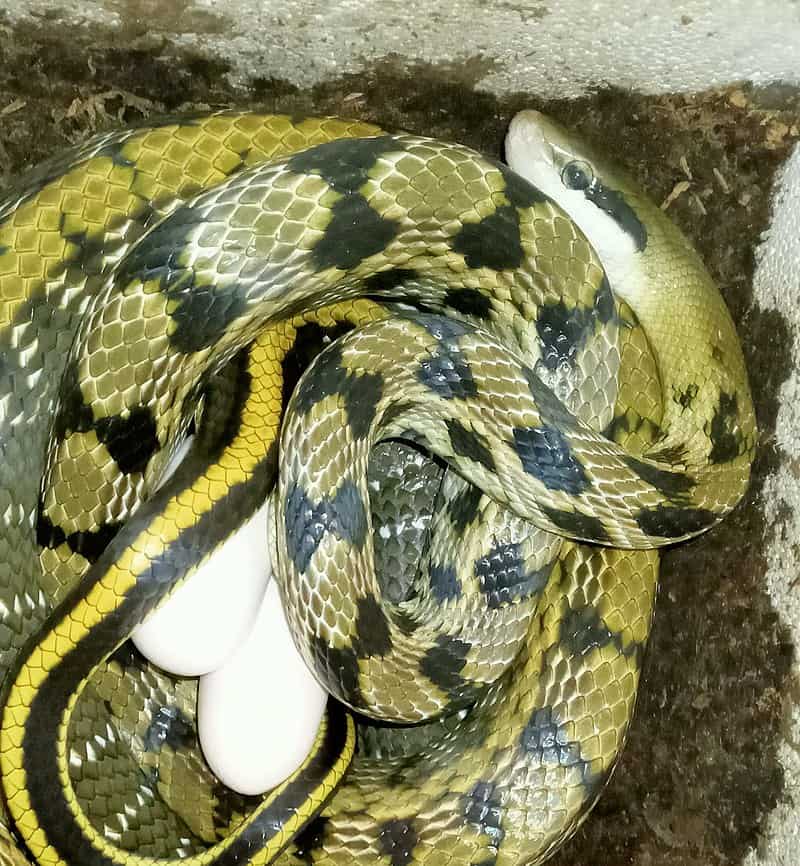
The endangered Louisiana pine snake lays just 3-5 eggs per clutch, but some species lay over 100. Size correlates with egg laying, but not perfectly. The highest newborn count didn’t involve snakes at all, but live young. This record was a Kenyan puff adder, living in peace in a Czech zoo, which somehow gave birth to 156 live young in one batch.
Newborn totals also correlate with thickness, which puff adders definitely possess. Another member of the 100 club is the checkered keelback of India. At 1.5 metres, this isn’t exceptionally long, nor particularly thick. But they’re a water snake, and semi-aquatic habitats like marshes and lakes correlate positively with egg totals. Checkered keelbacks produce 30-70 per batch, with 120 recorded for an individual in Gujarat state, India.
Sometimes brute size really is the explanation, the ability to stash more eggs inside the body, like the 6 metre Burmese python of Florida’s everglades. In 2023, a member of this invasive species was found guarding a nest of 111 eggs, officially joining the 100 club. The boa constrictor can lay over 60 young, explaining why it’s taken over South America.
| 6 | Peacefully coexisting snakes |
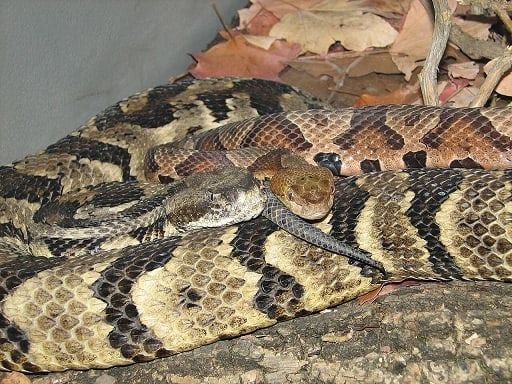
It isn’t just species members that gather communally. Completely unrelated snakes, even venomous killers, will sometimes slither into one refuge and live in peace and harmony. The Pilbara region of Australia is scorching, and pygmy pythons have been found inside hollow termite mounds with an assortment of other species, including king brown snakes and black-headed pythons. All are united in purpose by seeking shelter. More disturbingly, they’ll sometimes coil together into a great writhing ball.
The black mamba had one of the weirdest cases. They react to humans with aggression, yet a black mamba once shared its den with a Mozambique spitting cobra for 11 months. The two would lie side by side, never biting, and even enter the den together. The spitting cobra then vanished for 2 months, but returned to its old hideout, and its old black mamba comrade.
Despite many snakes being ophiophagous (eating other snakes), they sometimes forget this and become best friends for a while. Gopher snakes have been spotted sheltering with common garter snakes, western rattlesnakes, and western yellow-bellied racers. Maybe snakes are annoyed at having no arms and legs and want someone that can understand their problems.
| 7 | Rattlesnake communities |

Rattlesnakes don’t stop there, as in certain corners of the USA, they form the most advanced social communities yet discovered in the snake kingdom. Chief among these are the prairie rattlesnake and its mini cluster of relatives, like the Arizona black rattlesnake, which was once a subspecies.
Prairie rattlesnakes not only hibernate together, in their mid-western US territories, but gather together in their hundreds. One community was discovered on a private ranch in Colorado in 2020, and contained over 1000. Prairie rattlesnakes will actually recruit fellow females to guard their young while they embark on hunting expeditions.
Arizona black rattlesnakes live in mountains that tower above the surrounding deserts, usually over 1500 metres. These too guard each other’s newborns, and hibernate together in cracks in mountainous rock outcrops. But it’s also been found that certain Arizona black rattlesnakes prefer to spend time with each other. There are mini social groups within the community, while some members are more solitary. These rattlesnakes may be the first step towards snakes becoming a truly social animal like sheep, maybe even moving in herds (if that wasn’t the stuff of nightmares).
| 8 | Scent secrets |
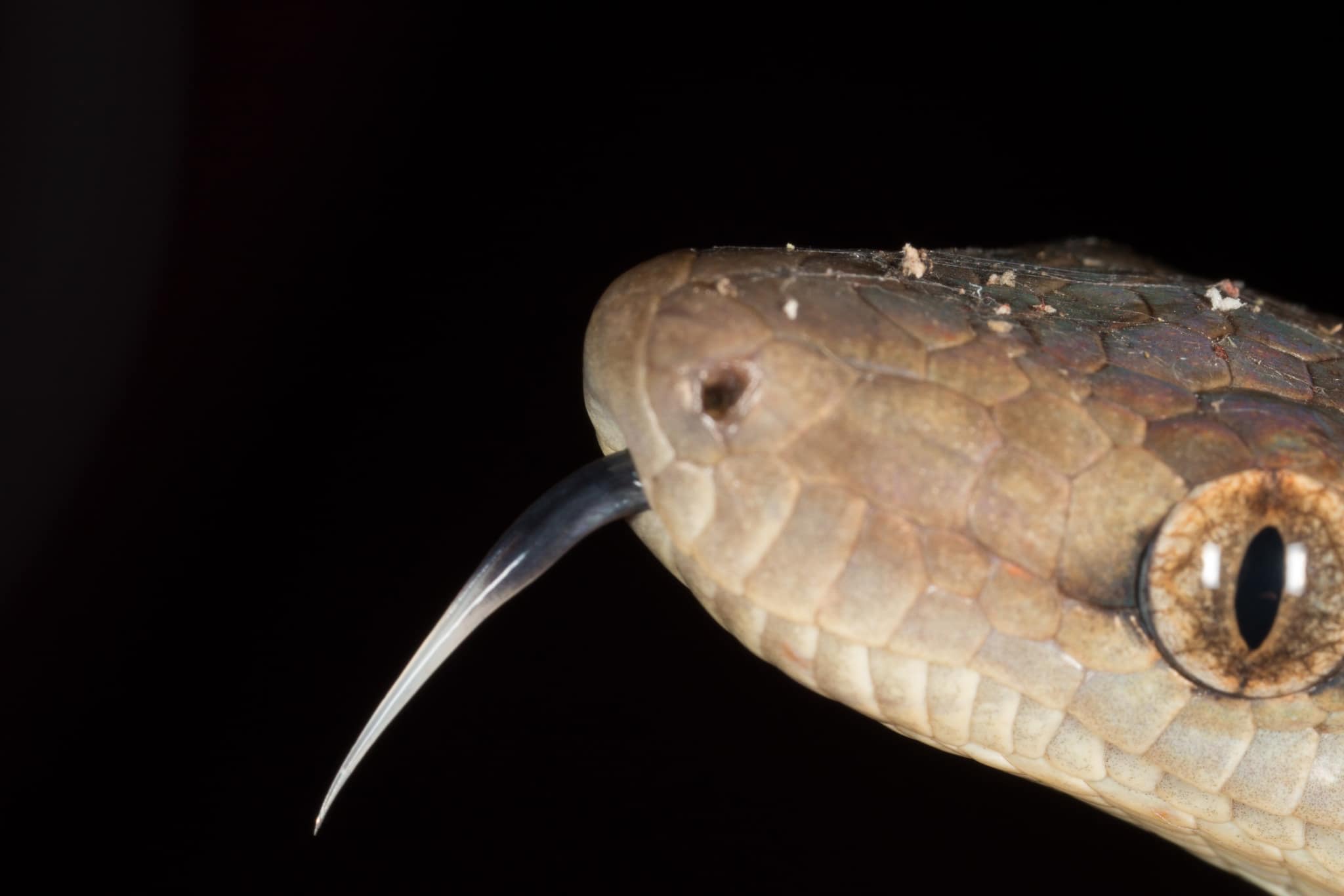
Snakes generally have poor eyesight, perceiving basic shapes (like a rabbit) with no detail, and no colours. Instead of eyes, their powers are concentrated in their tongue. With a special Jacobson’s organ, snakes can detect microscopic scent particles on the wind and clinging to rocks. This has transformed male-female relations, as the likes of olive pythons can track a female from 3 miles away. Common garter snake males have the ability to alter their own pheromones to seem more female. When eager rival males dash in to find the scent, the trickster male slips away and mates with the real female.
During breeding season, a female’s production of pheromones soars. To us, they’d probably smell like a haunted house, but to male gopher snakes or pine snakes, they’re irresistible.
Snakes also use scent to detect rival snakes which could kill them. A 1982 study on terrestrial garter snakes found that when exposed to California kingsnake scents, which are heavily snake-eating, they reacted with alarm, flecking their tongues frantically. When exposed to black ratsnake scents, they showed little concern. This supercharged snake apparatus has changed snake society in a variety of ways.
| 9 | Reproduce at 65 |
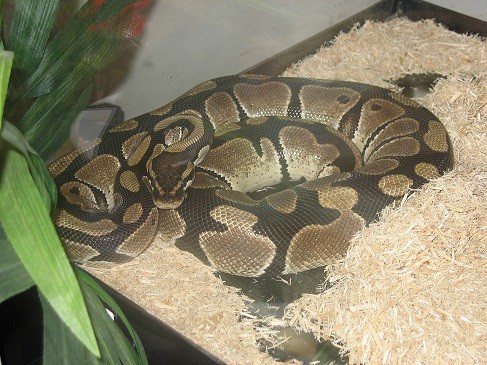
Some snake species have no wise old elders to tell younglings stories, while others can live to quadruple the age of a pet dog. Rubber boas can live for 50 years, with an all time record set by one which died in 2006. When Raab 1 was first discovered in the Oregon wilderness in 1971, she was already an estimated 20 years old. She was tracked in the wild for 18 years, until it was deemed necessary to place her in captive care, where she survived another 17 years.
Rubber boas move little, have no venom and rarely attack people. Like a tortoise, its humble nature allows it to continue on and on for decades. A ball python once gave birth at 62 years old in a Missouri zoo. This is freaky not just for her extreme age, but that she hadn’t encountered a male in 15 years (unless one unlocked her cage). Boa constrictors regularly exceed 25 years, the oldest ever being 40. Despite being the most primitive, unevolved snake families, it’s boas and pythons which have the advantage here.
Like crocodiles, snakes keep growing their entire life. Rapid growth ends at age 3 or 4, and from then on, the larger ones add several centimetres annually for the rest of their lives.
| 10 | Solitary snakes |
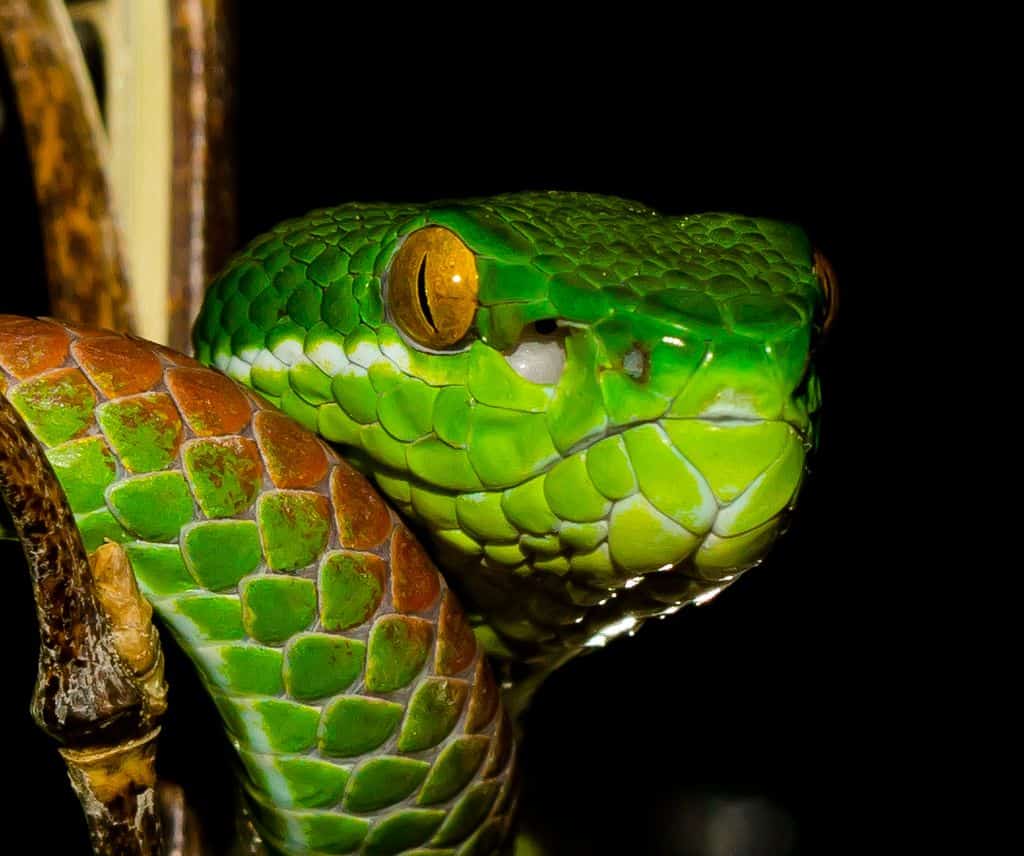
Not all snakes break the rules of their kind, otherwise the rules wouldn’t exist. Some stick to the cold-blooded reptillian tradition of being solitary and intermingling strictly for mating purposes. The white-lipped pitviper of Thailand follows this code, never sharing burrows together. This venomous species dwells on low branches and brushes. Each member has its own home range, an exclusive territory they control.
A study from northern Thailand found that in the core 50% of this territory, there was zero overlap with neighbouring white-lipped pitvipers. Though rattlesnakes are social, their viper cousins like fer-de-lances are solitary beasts.
One advanced behaviour science has identified involves egg laying. The likes of common keelbacks, an Australian species found in lakes and swamps, will lay their eggs in hollows with old rotting shells of their species. Some are two years old, and provided information to the keelback that it was a safe place to lay them, secure from predators. Snakes are more intelligent than people give them credit for.
